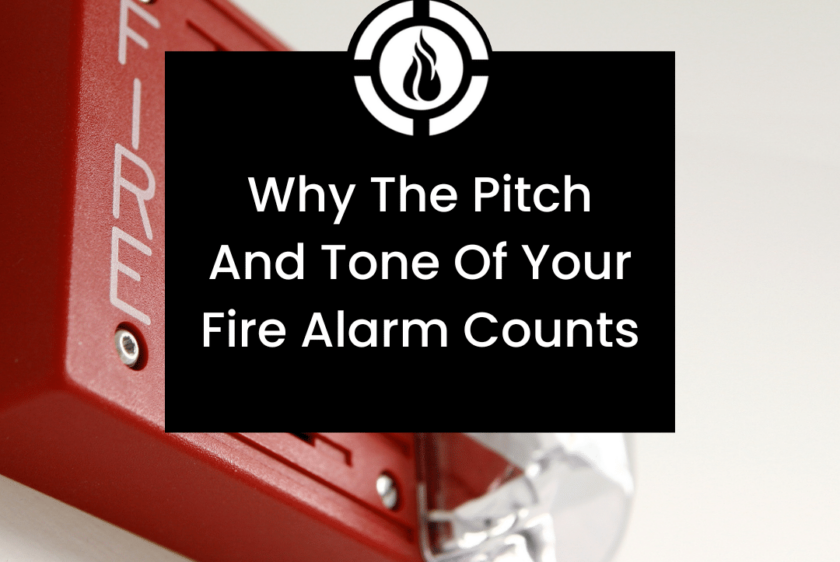What’s the optimal sound of a fire alarm? Our Miami fire alarm inspection team explores why pitch and tone are vital to the safety of your business.
Have you ever had a dream in which a repetitive beep turned into an excellent dance beat? That beep was your alarm clock, and you dream-danced your way into being late for work. Alarms are supposed to alert us that we need to do something – like wake up already. The same is true about your fire alarm, which is why its pitch and tone are two things our team checks when we perform your Miami fire alarm inspection.
Higher Pitched Sounds Alert Us
The human ear can pick up on tones, pitches, and frequencies at a wide range, but some of those pitches elicit different responses from our brains. Higher-pitched sounds are generally more unpleasant and alert us to attention. Lower-pitched sounds are used for non-emergency notifications like Siri telling you to “make the next left turn.” Some drivers even change Siri’s accent to a more pleasant tone, so she (or he) is more relaxed with instructions.
Fire alarms should be at a higher pitch because getting our attention is their priority. There has been much research and debate over the appropriate and most effective pitch for fire alarms. The NFPA 72 National Fire Alarm and Signaling Code® suggests that fire alarms should use a specific alert pattern known as “temporal three.” This pattern consists of three pulses followed by a brief pause, and then the sequence repeats.
When and Where To Use Lower-Pitched Alerts
Research has found that certain individuals have a more heightened sensitivity to lower-pitched sounds compared to higher-pitched ones. This heightened sensitivity to lower frequencies can lead to more effective alerts during emergency situations. Some facilities are better served to have fire alarms with lower frequencies because of the building occupants. Lower pitches better alert older adults, children, and those with hearing impairments. 
Some examples of facilities that may use a lower-pitched fire alarm system would be assisted living centers, childcare centers, and physicians’ offices. Lower-pitched alarms are also better at waking sleeping building occupants and are helpful in hotels, dormitories, and apartment buildings.
Does Your Fire Alarm Need Visual Aids?
Adding a visual component to your fire alarm system is another way to alert occupants to the emergency. Individuals with hearing loss or deaf people may not be able to hear either high or low frequencies and need the help of a visual signal. Strobe lights can be integrated into the audible fire alarm appliances in facilities like office buildings where there may be individuals with hearing impairments.
We Can Evaluate The Highs and Lows Of Your Fire Alarm
When our team performs a Miami fire alarm inspection, we can keep your fire alarm system in top shape for optimal performance. As part of your fire alarm inspection, we will also test your smoke detectors and determine if you need any parts repaired or replaced. If you are new to your office space, have us evaluate your fire alarm needs to see if an upgrade or a retrofit is appropriate. And if you need to swap out your current system for a higher or lower frequency, with or without visual aids, we can handle it.
DynaFire Sets The Tone For Fire & Life Safety
Contact DynaFire today to schedule your Miami fire alarm inspection. Our team can ensure your property’s fire alarm system is in top-notch condition, providing you with the utmost safety and peace of mind.






